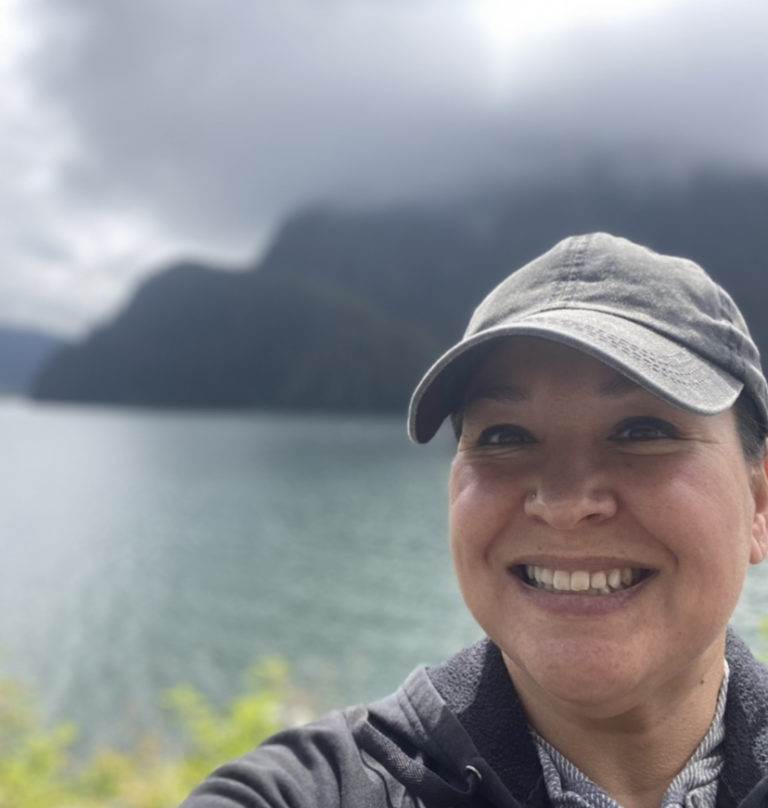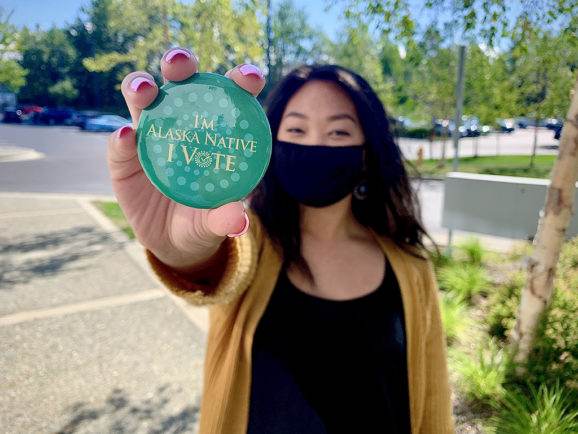
Michelle Sparck Hired as New Director for Get Out the Native Vote
Sparck envisions the organization as a supportive resource for Alaska Native political candidates

Imagine an Alaska where the state’s U.S. Senator or Representative is an Alaska Native person.
Michelle Sparck can envision it. As the new Director of Strategic Initiatives for Get Out the Native Vote (GOTNV), Michelle aims to take the nonprofit from increasing voting and voter registration among Alaska Native people to becoming a resource that supports Alaska Native candidates running for public office — including a congressional seat.
She cites the recent vacancy and special election in the wake of Representative Don Young’s passing as the kind of opportunity where GOTNV could make a real difference.
“It would have been fantastic to have been able to provide a list of Alaska Native candidates for the special election,” Michelle said. “GOTNV has the potential to be that resource.”
Power in Partnership
Once a standalone nonprofit, GOTNV joined Cook Inlet Tribal Council (CITC) as an affiliate in 2020, just in time for that year’s national election. Partnering together allowed GOTNV to tap into CITC’s existing relationship with Alaska Native people in the Cook Inlet region and access a voting base with real potential to create change in Alaska.
“This is an important time for Alaska Native people to expand civic engagement and have real impact through voting,” CITC President and CEO Gloria O’Neill said at the time. “It’s an exciting opportunity to create lasting change within the systems that affect people’s lives every day.”
Since that time, GOTNV has spearheaded efforts to encourage Alaska Native people to register to vote and to stay active in local and other elections. But with the hiring of Michelle Sparck, the affiliate turns its attention to making the Alaska Native voice a major player in Alaska’s political scene.

Political Experience
Originally from Bethel and a member of the Qissunamiut Tribe of Chevak, Michelle, whose Cup’ik name is Macuar, stepped into the world of politics immediately after graduating high school, when she interned with the office of Alaska Senator Ted Stevens.
After gaining additional experience working on fisheries issues under Chairman Don Young of the House Resources Committee, Michelle returned to Alaska to work with her Tribes and subsistence activities with the Association of Village Council Presidents. Later, she worked for several Alaska Native organizations, focusing on policies that affected natural resources, health care, and other issues.
“I worked like an ambassador between the entities so that the needs of Alaska Native people didn’t get lost in translation,” she said.
In her role as strategic initiatives director with GOTNV, Michelle is excited to put her political experience and skills to work bolstering the Alaska Native vote.
A Voice at the Table
But getting out the vote is only the beginning.
“Right now, we’re being very responsive [to political needs],” Michelle said. “But what we’d like to bring GOTNV to is being so proactive and so institutionalized that we’d be getting calls first, before things are set in motion, so that we can be a big voice at the table.”
The time is right. Alaska Native people make up almost 22 percent of the state’s population; they constitute 14 percent of the statewide adult population. If all Native people voted during a normal turnout year (in which 55 percent of non-Natives voted), approximately 25 percent of the electorate at the polls would be Native.
Meanwhile, the Alaska Native Claims Settlement Act (ANCSA) celebrates its 50th anniversary this year; the impact ANCSA has had not just upon the Alaska Native community but upon the entire state is an overwhelming example of what Alaska Native people can do as a unified force.
Get Out the Native Voice aims to increase voter registration efforts; educate Alaska Native people about civic engagement opportunities; and encourage Alaska Native participation in local, state, and federal government.
Making History
In 2020, history was made when a record number of Native American candidates won seats in the House of Representatives and Senate. Yet no Alaska Native person has been elected to national office. GOTNV wants to change that.
“Asking someone to run for office is easy,” Michelle said. “What GOTNV would like to see is that we provide the resources to help a novice politician become a supported politician.”
Going forward, GOTNV plans to hold regional meetings and offer outlets for rural Alaskan communities to have access to GOTNV’s supportive tools. Michelle envisions candidate labs that could show people the ins and outs of filing to run for office, along with other resources that could support potential Alaska Native political candidates — like the ones she has met all over the state.
“I was teasing a young Native lady who has so much potential, politically, about running in the special election,” Michelle related. “She pointed out that the Nome race has a couple of seats open in the city council in October that do not have incumbents protecting those seats. So that means these that are seats traditionally taken by non-Native folks are wide open now.
“That’s an opportunity for local Natives to realize, Hey, I can sit in that seat and affect change in a way that I know is appropriate for our people.”
For more information about Get Out the Native Vote, visit aknativevote.com.


